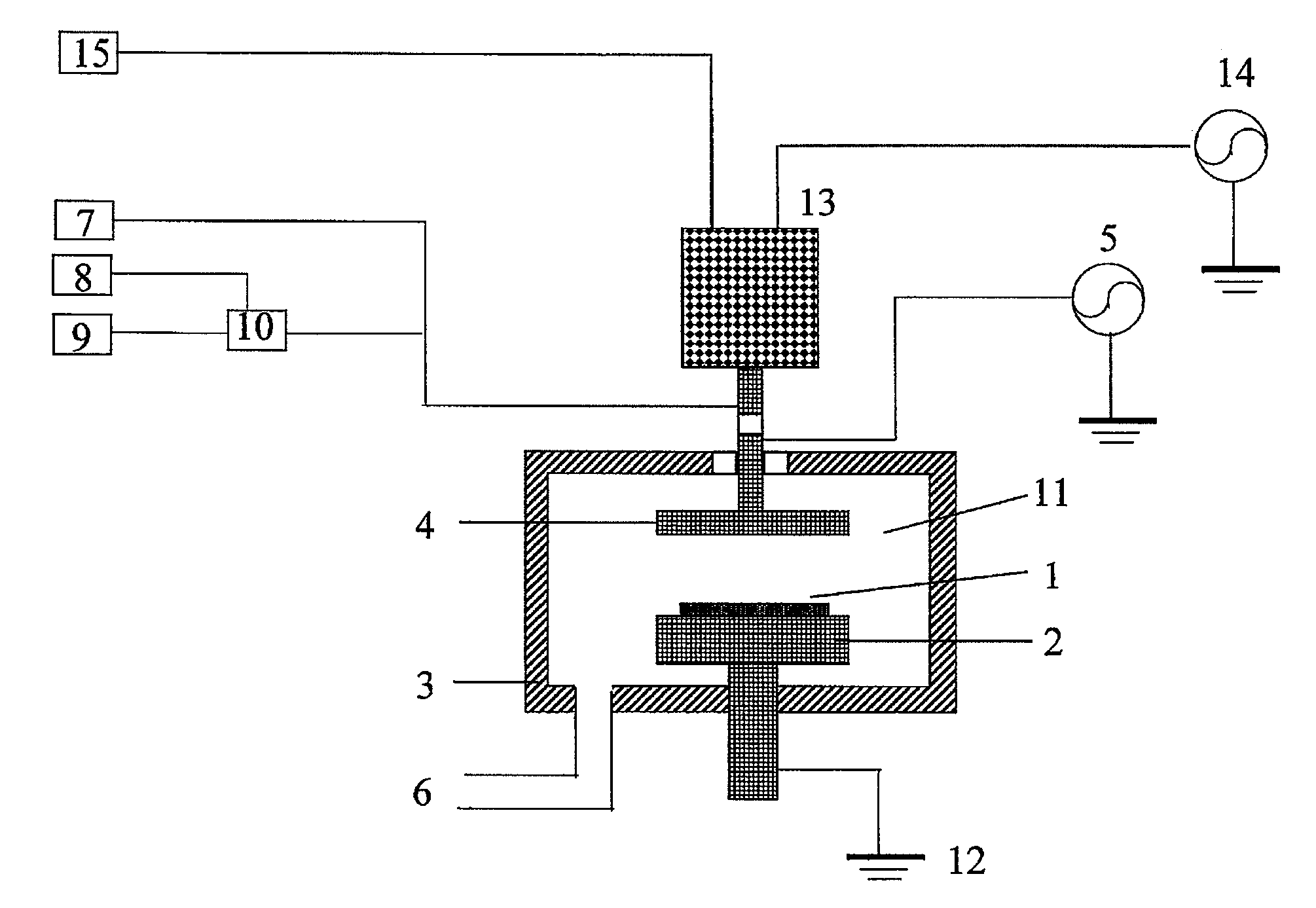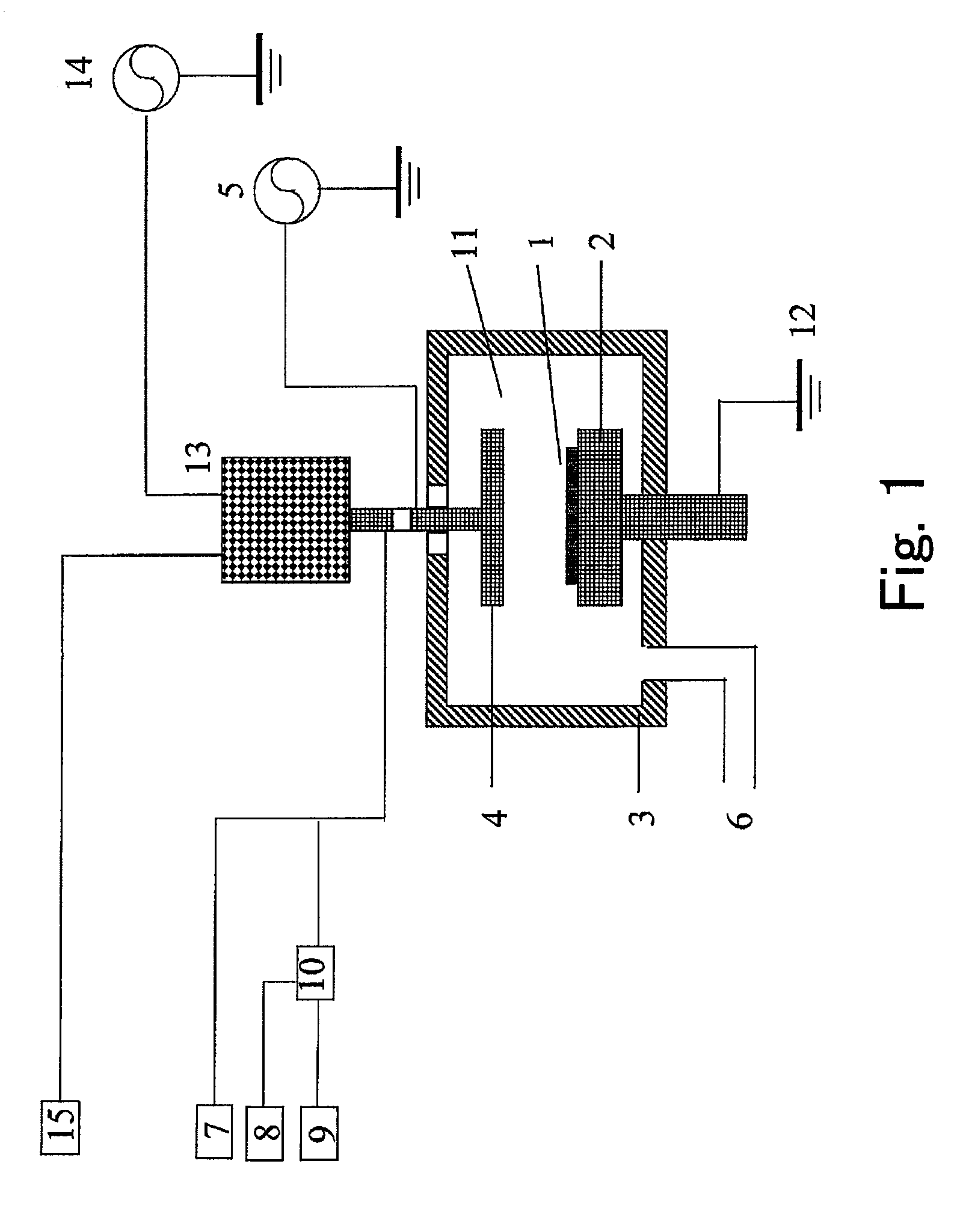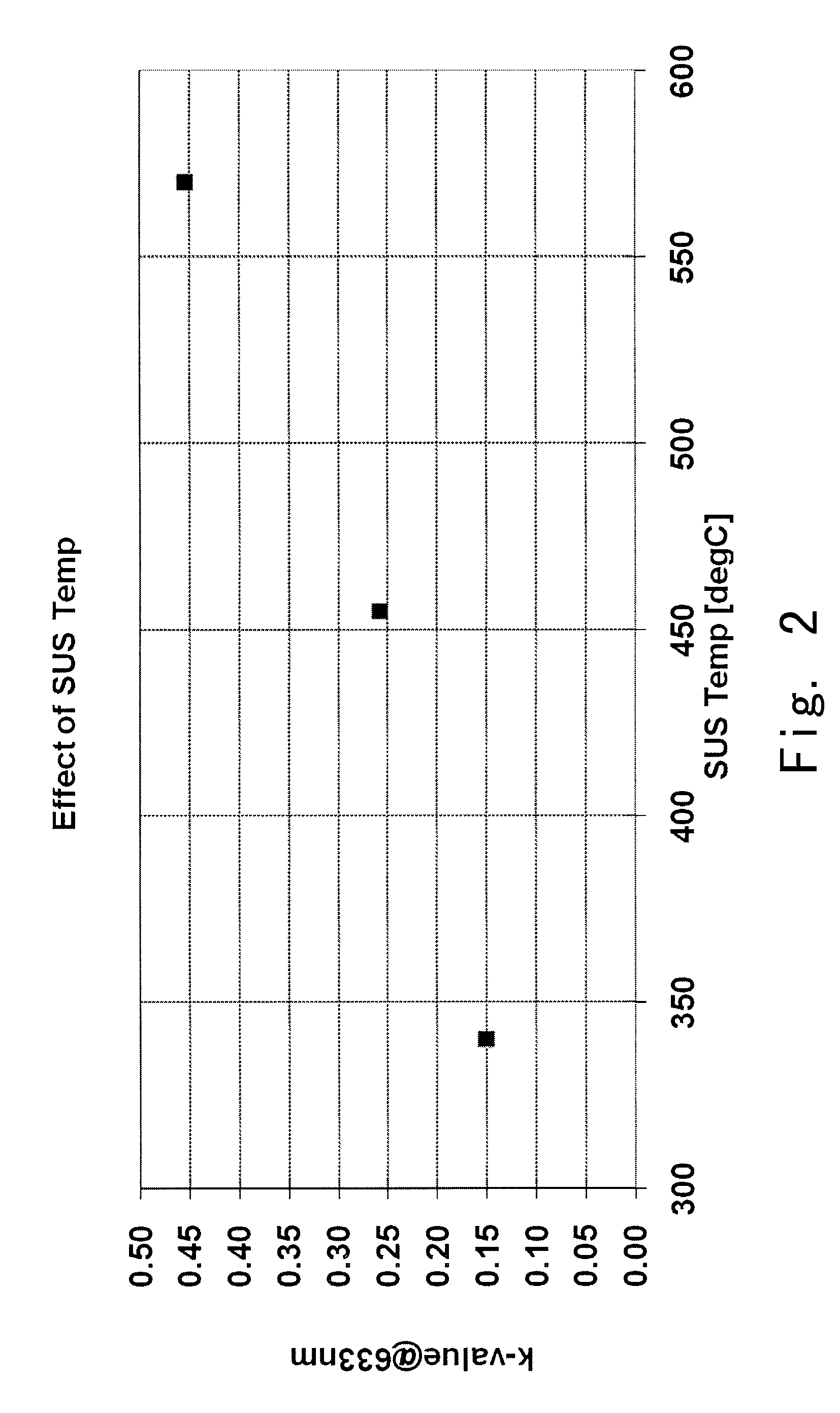Method of forming a high transparent carbon film
a carbon polymer and high-transparent technology, applied in the field of carbon polymer film forming, can solve the problems of difficult to form a polymer having a density of more than 1.2 g/cm, less than 0.05 extinction coefficient, 633 nm, etc., and achieve excellent characteristics
- Summary
- Abstract
- Description
- Claims
- Application Information
AI Technical Summary
Benefits of technology
Problems solved by technology
Method used
Image
Examples
example 4-3
[0133
[0134]Film Formation Results at 340° C.
[0135]Thickness: 200 nm
[0136]RI(n)@633 nm: 1.66
[0137]Extinction coefficient (k) @633 nm: 0.01 (see FIG. 3)
[0138]Density: 1.41 g / cm3
[0139]Modulus: 40 GPa
[0140]Hardness: 6.8 GPa
[0141]The films formed in Example 4-1 to 4-3 at a susceptor temperature of 340° C. show significantly better properties than those formed at other conditions, especially when the susceptor temperature was 340° C. (see FIG. 3).
[0142]Additionally, modulus, hardness of carbon polymer films obtained were all satisfactory and it is seen that the carbon polymer films obtained are suitable in terms of mechanical properties as for a hard mask. Furthermore, the absorption was also found to be low enough to allow a good alignment and an overlay measurement. As a result this tremendously suggests that above carbon polymer film is a reliable candidate as for a hard mask.
[0143]Example 5: Process conditions in this example were same as in Example 3 except for the ratio of the hydr...
PUM
| Property | Measurement | Unit |
|---|---|---|
| boiling point | aaaaa | aaaaa |
| processing temperature | aaaaa | aaaaa |
| density | aaaaa | aaaaa |
Abstract
Description
Claims
Application Information
 Login to View More
Login to View More - R&D
- Intellectual Property
- Life Sciences
- Materials
- Tech Scout
- Unparalleled Data Quality
- Higher Quality Content
- 60% Fewer Hallucinations
Browse by: Latest US Patents, China's latest patents, Technical Efficacy Thesaurus, Application Domain, Technology Topic, Popular Technical Reports.
© 2025 PatSnap. All rights reserved.Legal|Privacy policy|Modern Slavery Act Transparency Statement|Sitemap|About US| Contact US: help@patsnap.com



